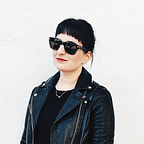How Starbucks Reserve Roastery & Tasting Room Is Changing Coffee Forever
Starbucks is known for a few things in the United States, mainly:
1. Making specialty coffee and espresso part of US culture. Many credit Starbucks for introducing words like ‘latte,’ ‘French Roast,’ and ‘cappuccino’ to consumer vocabulary.
2. Putting a Starbucks cafe on every other block.
One of the more recent developments by Starbucks headquarters is their Reserve Roastery & Tasting Room mega-store, which feels like Disneyland for coffee fans. The Reserve Roastery in Seattle is a chrome-filled roasting facility with specialty drinks and a whole new category of baristas. The Reserve Roastery is a special place — it takes coffee to a whole new level by making a spectacle out of the roasting process; it turns coffee into more of an experience: the menu is entirely different than your corner Starbucks, with special features like small batch roasting, multiple brewing methods, and coffee tastings, featuring several different coffees from different regions. The goal of the Roastery is to deepen the understanding behind coffee sourcing, roasting and brewing rare coffees. If you’ve ever set foot in the Seattle Starbucks Roastery, it’s clearly popular among tourists, which leads me to believe that it’s only a matter of time before specialty roasters start opening their doors to tourists.
Trish Rothgeb, co-founder and owner of Wrecking Ball Coffe Roasters, first spoke of contemporary coffee movements in a 2003 article for a publication called The Flamekeeper. She referred to First Wave coffee as just a drink that’s made out of a can or that you buy at a gas station with no thought of what it tastes like or how it smells; it just tastes like coffee, much like how Americans also perceive water. Second Wave coffee introduces espresso and basic specialty coffee beverages, namely the latte and cappuccino. A large portion of the US understands coffee under these two movements.
As almost an antithesis to the second wave movement, the third wave of coffee is a movement to produce high-quality coffee, and consider coffee as an artisanal product rather than a commodity. In this third wave movement, roasters, baristas and sippers appreciate the coffee for what it is, and they care about the origin of the coffee, the farmer, the expertise, roasting, and the craft to create the final drink (and the latte art).
Starbucks’ Reserve Roastery introduces the Third Wave of coffee to the mass consumer and shows them how a coffee bean becomes their cup of Joe by providing a place to view the process. There are coffee plants growing in the window sills; a drying platform that can be seen from the two-way bathroom mirror like an exhibit at the zoo; huge roasters for public viewing; giant monitors that show all the roasting calculations; and giant, twisting copper piping to carry the roasted beans to their final destination: your mouth.
The question here becomes: will third wave coffee culture expand to include roasters and coffee tasting rooms as an experience and destination, similar to vineyards or craft beer breweries? Coffee roasteries can become a part of the coffee-fanatics and eventually mass consumer. Imagine going “coffee tasting,” much like wine tasting. In the coffee world, they refer to this as “cupping,” which common with roasters.
A recent article in the Wall Street Journal compared wine tasting and coffee tasting, noticed how both coffee aficionados and wine Connoisseurs both talk about aroma, complexity, body and flavor in the same way. Starbucks even evokes similar sentiments, “coffee, like wine grapes, gets much of its flavor from the specific growing conditions of each producing region. The unique variables of each growing area — soil, temperature, elevation, the amount of rainfall and sunshine — affect the flavor of coffee in the cup.” The nuances in coffee profiles vary by variety, origin, climate, altitude, processing techniques, and brewing technique. Below, you’ll find a list of coffee flavor profiles that coffee roasters use to describe coffee taste based on what region it was grown in.
Typical tasting profiles by coffee:
Central America (Guatemala, Honduras, El Salvador, Nicaragua)
Central American coffees are balanced with a good mixture of smooth sweetness and tart, fruity acidity.
South America (Colombia, Brazil, Ecuador, Bolivia)
South American coffee tends to be relatively mild and light. Colombian coffee has a caramel sweetness, with slightly nutty undertones, and less acidicity. Brazilian coffee is more chocolatey and a little creamier.
Africa (Ethiopia, Kenya, Uganda)
Coffee originally was cultivated in Ethiopia. African coffees are usually bright, full-bodied, fragrant, fruity and floral.
Asia (Indonesia, India, Philippines)
Asian coffees are typically earthier, darker, bold and full bodied. The beans are generally less acidic.
As a home-brewer, I recognized these terms but didn’t realize the differences in flavors until I sat down for a “coffee tasting.” With three different cups from three different regions in front of me, I was able to decipher the differences and complexities of flavor in each cup.
My original question returns: will coffee tasting be the next big thing in cafes and for coffee fans? Starbucks Roastery seems to think so: New York City will receive its very own Starbucks Reserve Roastery in 2018.
